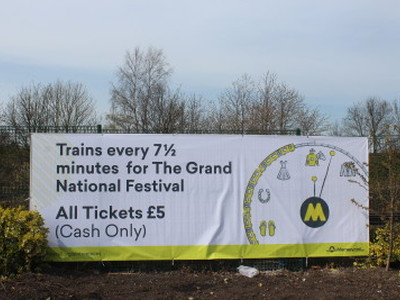Grand National 2025 Free Bets & Welcome Bonuses

Welcome Offer: Bet £10 & Get £30 in Free Bets for new customers at bet365. Min deposit requirement. Free Bets are paid as Bet Credits and are available for use upon settlement of bets to value of qualifying deposit. Min odds, bet and payment method exclusions apply. Returns exclude Bet Credits stake. Time limits and T&Cs apply. Registration required. #ad 18+
Best Odds: bet365 offer Best Odds Guaranteed on every horse race - every day! Take a price on your selection and if the SP is bigger bet365 will pay you at the bigger odds. Only bets placed from 08:00 UK Time on the day of the race will qualify for Best Odds Guaranteed. Available on Horse Racing. Applies to bets placed on Win and Each-Way Fixed Odds markets only. All racing in Australia, New Zealand, Japan, South Korea, Singapore and Hong Kong is excluded. Bet restrictions and T&Cs apply. New and eligible customers only. T&Cs apply. Only available to new and eligible customers. Registration required.. #ad 18+

18+ New Customers only; New bettors get 50% of deposit up to £50; Code: PLAY10; 1x per household; Min deposit £15 (no Skrill/Neteller); Wager deposit & bonus 8x; Max qualifying bet stake=initial bonus; valid 60 days; Min odds 4/5 singles, 2/5 per acca leg; Some bet types excluded; See full terms; #ad
Grand National Runners For 2024
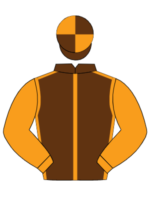
1. Noble Yeats

2. Nassalam
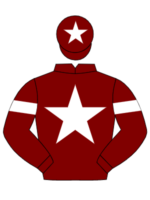
3. Coko Beach

4. Capodanno

5. I Am Maximus

6. Minella Indo

7. Corach Rambler

8. Janidil

9. Stattler
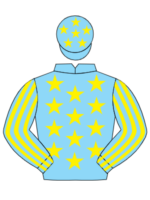
10. Mahler Mission
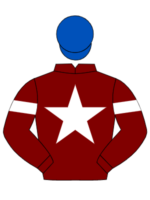
11. Delta Work

12. Foxy Jacks

13. Galvin

14. Farouk d'Alene

15. Eldorado Allen

16. Ain't That A Shame

17. Vanillier

18. Mr Incredible
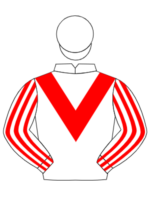
20. Latenightpass

21. Minella Crooner

22. Adamantly Chosen

23. Mac Tottie

24. Chemical Energy

25. Limerick Lace

26. Meetingofthewaters

27. The Goffer

28. Roi Mage

29. Glengouly
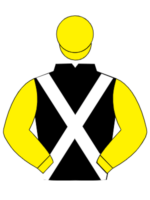
30. Galia Des Liteaux

31. Panda Boy

32. Eklat De Rire
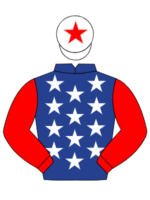
34. Kitty's Light
Non Runners

19. Run Wild Fred
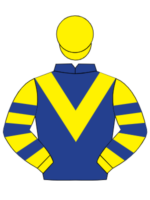
33. Chambard
How to Bet on the Grand National

The Grand National is not a race where you can easily predict the winner, that is part of the reason why it is the worlds most loved horse race; because literally any horse entered could win it. In its history the race has been won by the favourite only around 15% of the time, compared with up to 30% for horse racing in general. This gives you an idea of how wide open the race is when it comes to betting.
Most people bet on a horse to win or bet each-way. There are other bets available, however, that could suit you depending on what exactly you think your horses will do and how confident you are in your predictions. The more specific you are in your predictions the better odds you can get. Here are the main bet types you can place on the Grand National:
- Win: Single bet with a single stake that pays out only if the horse wins.
- Each-Way: Two bets packaged into one, one bet on the horse to win and another bet on the horse to place. If the horse wins both bets pay out and both stakes are returned, win bet at full odds and the each-way bet at a fraction of those odds (1/4 or 1/5). If the horse places but doesn’t win the win bet and stake is lost and the place bet and stake is returned.
- Place: You can bet on a horse to place without having to also bet on it to win. You will be given the same terms as each-way (1/4 or 1/5 odds) but only need to bet one stake.
- Each-Way Extra: More places offered than standard but with lower odds as a trade off.
- Ante-Post: A bet placed a day or more in advance of the race, often better odds but not always with concessions (e.g. non-runner no bet (NRNB), best odds guaranteed (BOG), extra places).
- Exchange: Peer-to-peer betting, allows you to get better odds in general when backing horses (although without concessions) and you can also lay bets to other people, i.e. you become your own bookie and offer odds for other people to back. If you lay a horse and it loses you win the stake of the person who backed the horse at the odds you offered (minus a small commission for the exchange).
- Forecast: Predicting the winner and the horse that comes second. A straight forecast predicts the 1-2 in the exact order, a reverse forecast predicts the top two horses in any order.
- Tricast: Similar to a forecast except you are predicting the top 3 finishers 1-2-3.
- Tote: Pool betting, often better odds than fixed-odds bookies but without additional concessions (NRNB, BOG, extra-places, etc). Can place win, place and each-way wagers as well as ‘exotic’ bets; Exacta (predict 1-2 like a forecast), Trifecta (predict 1-2-3 like a tricast).
- Other Markets: There are several specials you can bet on. You can bet on a horse not to win, to place or not place, cover bets (stake refunded if the horse finishes second or sometimes third), betting without the favourite or specific runner(s).
Choosing Your Horse
 There is no hard and fast strategy for choosing a Grand National winner and in many ways all methods are valid, whether you study the form, jockey and trainer in depth or you simply punt for the horse name or jockey colours. There are, however, some general points that could help you with choosing your bet. Here is our top 10 guide to choosing a bet:
There is no hard and fast strategy for choosing a Grand National winner and in many ways all methods are valid, whether you study the form, jockey and trainer in depth or you simply punt for the horse name or jockey colours. There are, however, some general points that could help you with choosing your bet. Here is our top 10 guide to choosing a bet:
- Favourites are often poor value relative to their true odds of winning. This is because odds are dependent on how much money is placed on a given runner, therefore the more people that back it the shorter the price becomes, when in reality its chances of winning do not ultimately change. The average odds for a Grand National winner since 1994 is 22/1.
- If you have a fixed horse in mind to back it may be worth betting ante-post (more than a day in advance) as you can often find better odds this way, especially if you think that horse could be popular. It is worth looking out for non-runner no bet and best odds guaranteed offers for ante-post bets if you do this, otherwise if the horse doesn’t run or the odds lengthen you could lose out.
- More each-way bets are placed on the GN than any other horse race, which makes sense because there is a field of up to 40 runners and backing the winner can be difficult. If betting each-way look for extra places, in the past some bookmakers have offered up to 7 places, and enhanced each-way terms, such as 1/4 odds for a place rather than 1/5.
- When you join most betting sites they will give you a welcome incentive to try them out (e.g. Bet £5 Get £20 in free bets). Most bookies, however, pull their offers on the days surrounding the main race due to historic bonus abuse. Therefore, it is advisable to sign up to a site a few days in advance of the race so that you can claim the best sign up offers. You can still wait to bet on the day, it just means you can get the better offer. Some bookies also stop sign ups on the Saturday because they can’t handle the load and need to keep their site running smoothly for existing customers. Do not wait until the last minute to place your bets either as bookie apps and websites can become overloaded from the high traffic in the hours before the race starts. Bookmaker sites have been known to crash on Grand National day.
- When you bet on the day of the race only bet with a bookie that has best odds guaranteed, otherwise if the odds drift out you by the time the race starts you won’t be given those better odds and you will lose the benefit. Even if you bet ante-post, if you are doing this within around 6 weeks before the race you can often find NRNB and occasionally BOG in the week or so before.
- Top jockeys will generally only ride the best horses and so consider the jockey as well as the horse. For example, in 2021 Rachael Blackmore became the first female to ride a National winner and she did this on the back of being top jockey at Cheltenham a month earlier. It was fairly obvious she was on top form and was very hungry for a win in the biggest race.
- Leading trainers often enter several horses, for example, in 2019 Gordon Elliott entered 15 horses into the race. It is evident that these trainers are throwing everything at the race and it can be sign for punters that they should consider backing one or two of their entries. Generally trainers will have one or two horses they really think will win (e.g. Elliott’s Tiger Roll in 2019), the others are often run to give them experience and also help the top horses as they will be running with their stable mates. The trainer will give their best horses the best rides so look who the jockeys are for those horses.
- In recent history almost all of the horses that have won have been between 8-11 years old (average age since 1994 is 9.7). Horses can enter the race from 5 years old but often younger horses are entered for experience and are not yet mature enough with enough stamina to win the race. Conversely older horses often do not have the speed to win, especially if the ground is firm or good.
- Jump racing horses have long careers (from 3-4 up to 13-14 years old) and many will run the race several times. It is worth looking at previous results for runners and consider that a horse that has never run the race before will not have experienced quite how gruelling the race is. Also look at recent form for your runner(s), does the horse have a tendency to fall, for example, as there is no race a horse is more likely to fall in than the Grand National. Does the horse like firm or soft ground? Does the horse tend to lead from the front or make a late surge? Being in the pack in the National can be more dangerous due to the risk that other fallers could pull your horse down or impede it. It is also worth looking at the recent Cheltenham results in the Cross-Country Chase for an idea of who the best performing stayers are over long distance. The Cross-Country Chase has 32 similar fences over a distance of 3 mile 6 furlongs, 88% the distance of the Grand National. Two time National winner Tiger Roll won the Cross-Country Chase a record three times.
- Weather is important, horses are known to favour certain conditions, some favour firm or good ground others favour soft or heavy ground. It is worth considering the weather conditions in the lead up to the race and on the day. If there has been a lot of rain then it will favour slower horses that are good in heavy conditions (often older horses). If it has been beaming sun and dry for the week then the race will favour faster runners (often younger horses).
Previous Winners
| Year | Horse | Starting Price | Trainer | Jockey | Prize Money |
|---|---|---|---|---|---|
| 2024 | I Am Maximus | 7/1 | Willie Mullins | Paul Townend | £561,300 |
| 2023 | Corach Rambler | 8/1 | Lucinda Russell | Derek Fox | £500,000 |
| 2022 | Noble Yeats | 50/1 | Emmet Mullins | Mr Sam Waley-Cohen | £561,300 |
| 2021 | Minella Times | 11/1 | Henry De Bromhead | Rachael Blackmore | £500,000 |
| 2019 | Tiger Roll | 4/1 | Gordon Elliott | Davy Russell | £500,000 |
| 2018 | Tiger Roll | 10/1 | Gordon Elliott | Davy Russell | £500,000 |
| 2017 | One For Arthur | 14/1 | Lucinda Russell | Derek Fox | £561,300 |
| 2016 | Rule The World | 33/1 | Michael "Mouse" Morris | David Mullins | £561,300 |
| 2015 | Many Clouds | 25/1 | Oliver Sherwood | Leighton Aspell | £561,300 |
| 2014 | Pineau de Re | 25/1 | Richard Newland | Leighton Aspell | £561,300 |
About the Grand National

The Grand National is the unequivocal highlight of the world wide horse racing calendar. The race is held at Aintree Racecourse, which is in Liverpool in the North West of the United Kingdom. It retains its place prominently in British culture for many reasons. Set over four and a quarter miles, the Grand National is a race of endurance over 30 of the hardest and highest jumps to be negotiated in a handicap steeplechase horse race in the world.
With a vast field of 40 of the most experienced and best jump racing horses, it is not surprising the race is popular among many people who do not usually watch the sport. Many people want a piece of the adrenaline fuelled action and unlike many other top horse races the winner is far from predictable. It’s true that they say, the Grand National is “the ultimate test of horse and rider”.
Early History
 The Grand National has been taking place for over 180 years. The first ever race was held in 1836. However, the race back then looked very different to what is adorned on our television screens and multimedia devices today. The land around what we know as the suburban area of Aintree and the vicinity of todays racecourse was open fields. Riders negotiated hedges and brooks between two geographical landmarks or churches; a steeplechase. A small grandstand was built in 1829 by entrepreneur and hotelier, William Lynn. He was the founder of the Grand National. This was the birth of the Grand National. William Lynn had an excellent idea and he must be thanked for the seed he sowed back in 1829.
The Grand National has been taking place for over 180 years. The first ever race was held in 1836. However, the race back then looked very different to what is adorned on our television screens and multimedia devices today. The land around what we know as the suburban area of Aintree and the vicinity of todays racecourse was open fields. Riders negotiated hedges and brooks between two geographical landmarks or churches; a steeplechase. A small grandstand was built in 1829 by entrepreneur and hotelier, William Lynn. He was the founder of the Grand National. This was the birth of the Grand National. William Lynn had an excellent idea and he must be thanked for the seed he sowed back in 1829.
Although there does seem to be an everlasting debate involving the races that took place in 1836,1837 and 1838. Some historians think the Grand National was actually born in 1839, whereas others say the race wasn’t. For arguments sake, we at GNB believe the Grand National sits firmly in the history books from 1836 and so we have documented it from then.
In 1838 there were some significant events that happened which are likely to have contributed to the rising popularity of the race. Another famous race had always clashed with the Grand National. This was The Great St. Albans Chase, which was in a better location in the country for spectators to get to, however after 1838 the competitor race was not renewed. Also, a new railway line was built connecting Liverpool with existing rail networks between Manchester, Birmingham and London. From 1839 more spectators could reach the racecourse for the first time and so it was at that point, the love affair for the Grand National began.
Famous Races And Runners

As the Grand National has been taking place for over 180 years, there are hundreds, if not thousands of stories that have been shared and told through the generations. In the run up to each race, newspaper sports pages delight in the opportunity to discuss the horses form and make predictions on winners. Following the event, analysis of the race itself are emblazoned in every sports publication. Interviews with jockeys and trainers and horse owners fill pages and make for interesting reading.
There are a few notable races that will have certainly turned heads and cemented their place in the history books, but we have to share what is undoubtedly the most famous race of them all:
The one where a 100-1 horse won: In 1967 a bizarre set of circumstances took place that you could never have predicted. A rider-less horse, called Popham Down galloped across the front of the field bringing pretty much every other horse to a standstill at fence number 23. Riders were flying off horses everywhere, getting stuck amid the spruce on the top of the fence, horses turning around and going back the way they came. It was total chaos. One horse; Foinavon and his jockey, John Buckingham was the only horse, out of an unusually big field of 44 that year, that came out of the melee totally unscathed. He rode on, armed with is 100-1 odds to gain a very unsuspecting victory. Fence number 23rd naturally had to be nicknamed Foinavon.
1928 – the biggest horse pile up in Grand National History: The one where only 2 horses completed that race. Conditions were misty and commentaries on the early races are incomplete. However we know that Easter Hero fell at the Canal Turn on the first circuit caused a huge pile up of pretty much the whole of the field, with seven horses managing to get back up and carry on. This reduced to three, then by the end only two; Tipperary Tim and Billy Barton. It is thought that an acquaintance of William Dutton who was the jockey on Tipperary Tim shouted out as the horses were getting ready to race: “Billy boy, you’ll only win if all the others fall!” And so he did.
Fences

The course taken for the Grand National includes sixteen fences. Of the sixteen, the first fourteen fences are jumped twice. Riders complete two laps of the course, but on the second lap they miss out jumps fifteen and sixteen.
Up until 15 years ago the fences were made of wooden posts reaching up the the top of the fence covered in spruce branches. However, the fence structures were reviewed as part of the race’s safety protocols that have been put in place to ensure that whilst it is the most challenging Steeple chase, horses and jockeys are kept as safe as possible. In recent years, the fences still look very similar, however the wooden posts do not reach the tip and there is more spruce placed on the very top, to ensure the clearance is softer; the horses won’t bang their legs as easily if they jump and are slightly too low. There are other safety features that have been added to help jockeys ensure they have the best chance at navigating and ensuring the best clearance.
The height of the fences in The Grand National are astounding. They range from two feet, six inches to five feet, two inches. Just to make it even harder, the lowest fence has a 12 foot, six inch pond spread after it. Although the fence is high, the jockeys need to get their horse to, in effect, fly over it and the water beyond. This fence is famously named ‘The Water Jump’. If the water jump isn’t hard enough, the highest fence of the course is just before it; The Chair.
As with The Water Jump and The Chair, other fences have been given iconic names because of the scintillating dramas that have taken place at them over the years the race has been running.
For example, Becher’s Brook was named following the drama that took place at that very fence in 1839. Jockey, Captain Martin Becher was dramatically thrown off his horse, Conrad. The crowd were aghast because Captain Becher was coined as one of the top jockeys and should have been bringing Conrad all the way home, not taking him for a swim! Becher’s Brook is also fence number six and 22.
Aintree

Aintree Racecourse opened in 1829. It held small flat racing events and was just like any other flat race course. William Lynn leased the land from Lord Sefton and had big ambitions for it to become a firm location in the horse racing world.
William arranged for the courses first grandstand to be built and Lord Sefton himself placed a box of sovereigns into the footings. The original grandstand has, over the years been replaced and rebuilt to what we know today as The Lord Sefton Stand.
During the first world war Aintree was taken over by the Ministry of War and the Grand National held in Gatwick (aptly named, the War Nationals) and during the second the race course actually became a prisoner of war camp and the races were not held between 1941 and 1945.
We then gallop on through the early days of the Grand National and arrive at 1949 ,when the Topham family purchased the racecourse outright from Lord Sefton.
Mirabel Topham, a former gaiety girl took the reigns and developed the race course further. Following the second world war, the racecourse was set to decline and nearly became derelict. One of the biggest initiatives Mirabel introduced was a motor racing circuit. Work began to build the motor racing track in 1954. The circuit being built in the inner triangle of the horse race course. It hosted one European Grand Prix once an five British Grand Prix. The last being held in 1962.
In the 1960’s, the post war boom saw the racecourse dwindle again. In 1973 a property developer named Bill Davies brought the course and promised to keep the flame of the Grand National lit. Sadly matters got worse and during the mid to late 1970’s the Grand National had its worse ever audience numbers. Davies, had very different ambitions to the horse race loving public and began to make swift plans to build housing estates on the racecourse land.
Ladbrokes the bookmakers and the general public campaigned, Ladbrokes invested and the public raised money through donations to allow The Jockey Club to keep Aintree and its gem, The Grand National alive. They bought the course off Davies and told him where to stick his property development plans. Phew.
The rest as they say is history… If you would like to know more about getting to Aintree to visit the racecourse see our articles.
Prize Money
 With a race that tests the ultimate endurance skills of horse and jockey, goes a hefty prize pot. The Grand National race claims the biggest prize pot in the British National Hunt racing calendar, with that, it is also the most valuable. It is a national treasure.
With a race that tests the ultimate endurance skills of horse and jockey, goes a hefty prize pot. The Grand National race claims the biggest prize pot in the British National Hunt racing calendar, with that, it is also the most valuable. It is a national treasure.
Over the years the prize pot has grown as sponsorship has become more lucrative. 25% of the field will take away a cheque, as first to tenth places receive a prize. This was not always the case as over the years, the number of prizes has increased.
In 2019, the total prize pot for all 10 places took a share of £1,000,000. The winning horse taking away £561,000. This figure being shared between the jockey, trainer, owner. In 2021, the prize pot for the first 10 finishers was slightly smaller at £750,000. The winning horse, Minella Times took away £375,000 and from that, winning jockey Rachel Blackmore received approximately £28,000.
Cancelled Races
 During the first world war, the Grand National was moved to Gatwick as the Ministry Of War had taken temporary lodgings at Aintree. The races in 1916, 1917 and 1918 are often not included in the history books as they were called the War National Steeplechase. We have included them on Grand National Betting, because in our eyes, they are Grand Nationals. It is a testament to the popularity of the Grand National that the racing continued during the war.
During the first world war, the Grand National was moved to Gatwick as the Ministry Of War had taken temporary lodgings at Aintree. The races in 1916, 1917 and 1918 are often not included in the history books as they were called the War National Steeplechase. We have included them on Grand National Betting, because in our eyes, they are Grand Nationals. It is a testament to the popularity of the Grand National that the racing continued during the war.
The second world war delivered a different fate and the race was stopped entirely during 1941 and 1945. Many of the riders and trainers would have probably been conscripted and fought for the freedom and the race to one day be able to return perhaps.
1993; the race that never was. This was not a cancelled race, instead this race was declared as ‘void’. A horse got tangled up in the starters tape which resulted in a false start. The rest of horses and jockeys kept going and as the race went on trainers and officials were frantically waving red flags to the jockeys to get them to stop in an attempt to try to restart the race. This was fruitless, because many of the jockeys thought the people waving the flags were protestors and trying to sabotage the race. Seven horses ended up making it all the way to the finish line and in record time. The race ‘void’ non the less.
1997; the race that was postponed. The race course received bomb threats from the IRA (Irish Republican Army). The police led a mass evacuation of over 60000 people and of course horses. People had to leave their cars at the racecourse which resulted over 20,000 people being stuck in Aintree. The hotels were at full capacity so local residents opened their doors. It hit news headlines and the race was run two days later on the Monday. To this day, if you look up on the roof of the grandstands the police presence up there is phenomenal.
2020; The COVID-19 pandemic. As with all sport during 2020, the Grand National was cancelled. Every one stayed at home and watched a pretend virtual Grand National instead. it simply wasn’t the same.
Trivia

The Story of Edward (Eddie) Dempsey, the (Jockey) in the fog and Caughoo (horse): It was the renewal of the race in 1947. There was thick fog and a field of 57 runners. The conditions for the race were horrendous. Horses within feet of each other being near invisible. Caughoo was not a favourite, nor anywhere near being a favourite. Caughoo and Eddie won; they appeared out of the fog, several lengths ahead of the rest of the remaining field to take the finish line. Some years later, the jockey on the horse, Lough Conn, that came second to Caughoo saw Eddie and took him to court stating that there was absolutely no way he could have won on Caughoo and he was convinced that he hid behind a fence in the thick fog, waited for the runners to complete that lap, then re appeared to take the last few fences. Eddie swore blind he didn’t cheat and the case was dropped. However, years later, Eddie fell on hard times and sold a story to a Sunday paper stating that he did actually cheat after all!
Neville Franklin Crump The notorious race horse trainer. Neville held a training license between 1937 and 1989. Neville was not only known as a twice National Hunt Championship trainer and with three Grand National wins under his belt, but also for his notoriously dry and cutting wit. Many thought he was a hostile man. He made jokes about anything and was never afraid to share his opinion in the public eye. Crump was asked if a certain elderly member of the aristocracy would make a suitable racecourse steward. Crump’s reply: “Oh, he’d be perfect,” Crump said. “He’s deaf, he’s blind and he knows f*** all about racing.”
Jockey: Beltrán Alfonso Osorio, 18th Duke of Alburquerque and his 107 injuries: Beltran attempted the Grand National seven times. Over those seven attempts he broke 107 bones. His final ride in 1976 left him in a coma for two days. Interestingly, following his announcement to have an eighth attempt the following year, his riding license was revoked for his own safety. He sounds like one heck of a jockey!


